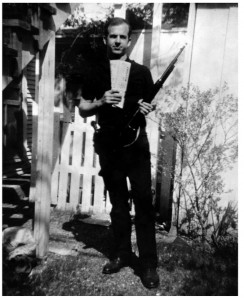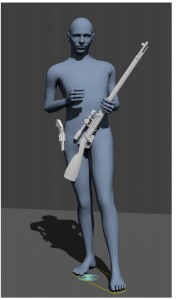Oct 20 2015
Another Nail in the JFK Conspiracy
 More than 50 years after JFK was shot and killed by Lee Harvey Oswald the majority of Americans believe that the assassination was part of a conspiracy. Recent Gallup polls show that 61% believe others were involved in the assassination, while 30% believe Oswald acted alone (in 2000 the numbers were 81% and 13% respectively).
More than 50 years after JFK was shot and killed by Lee Harvey Oswald the majority of Americans believe that the assassination was part of a conspiracy. Recent Gallup polls show that 61% believe others were involved in the assassination, while 30% believe Oswald acted alone (in 2000 the numbers were 81% and 13% respectively).
This is despite the fact that the evidence overwhelmingly shows that Oswald acted alone, and there is no solid evidence of any conspiracy. What this reflects, in my opinion, is two things: the psychological allure of conspiracy theories, and the cottage industry of conspiracy theorists.
Whenever I discuss conspiracy theories I have to add this caveat about what I mean. Obviously there are real conspiracies in the world – whenever two or more people work together to commit a crime or do something nefarious, you have a conspiracy. “Conspiracy theories,” however, is short hand for a grand conspiracy, something that involves many people or powerful organizations working over long periods of time through vast networks of control.
Further, like many categories of proponents that skeptics tend to address (pseudoscientists, cranks, true-believers, deniers, etc.), conspiracy theorists are defined mainly by their behavior, the way that they construct their beliefs and arguments.
For example, the power of conspiracy thinking is that it is immune to refutation through evidence. Any lack of evidence was covered up. Any evidence against the conspiracy theory was planted. Anyone who mounts a convincing argument against the conspiracy is part of the conspiracy.
But the cornerstone of conspiracy thinking is anomaly hunting – their “evidence” for a conspiracy is largely apparent anomalies, things that don’t quite make sense at first blush. It’s actually easy to trump up apparent anomalies, because the world is complex and it’s difficult to explain any complex event down to the tiniest detail. Further, people are quirky individuals, and have their own complex motivations for doing things.
Why was there a man standing on the side of the road near where JFK was shot with an open umbrella, on a clear day? The behavior seems anomalous. Perhaps he was signalling the shooter. Unless you had some very specific historical information, you would never guess the real explanation.
One apparent anomaly that JFK conspiracy theorists have pointed to for years is the photo of Oswald prior to the shooting holding a Carcano rifle, the very one used in the assassination of JFK. This is a pretty solid piece of evidence that Oswald owned the gun used and was practicing with it. In fact, for your reference, the definitive analysis of the JFK assassination was Case Closed by Gerald Posner. In this book Posner actually analyses the case for Oswald, convincingly showing that Oswald as a lone shooter is the most consistent interpretation of all available evidence.
Because the photo is part of the evidence for Oswald as the shooter, conspiracy theories have tried to refute it by looking for anomalies in the photo. Further, if they could demonstrate that the photo was a fake, that would be real evidence for a conspiracy. Here is one example, but there are many. Essentially, these are non-experts shooting from the hip, looking for anything that seems odd to them.
Two of the main points made for the fake photo claim is that Oswald is standing at an odd angle, and the shadows are inconsistent. The shadow argument reminds me of conspiracy theory claims about the faked moon landing, arguing the shadows on the moon are inconsistent. The real problem is that it is difficult to imagine exactly how a three dimensional scene will be represented in a two dimensional image.
 Now researchers at Dartmouth College have published a computer analysis of the photo. They created a 3-D reconstruction of the image, mainly using software called Blender. They created his skeleton, skin, distributed weight throughout the body, exactly duplicated his stance, and then calculated his center of gravity. They concluded that his center of gravity lies well within his base of support, so his stance was stable. In fact they then repeated the analysis with 1,000,000 perturbations (adjusting the weight and stance a bit to account for any errors in their reconstruction) and 99.99% of the reconstructions are stable.
Now researchers at Dartmouth College have published a computer analysis of the photo. They created a 3-D reconstruction of the image, mainly using software called Blender. They created his skeleton, skin, distributed weight throughout the body, exactly duplicated his stance, and then calculated his center of gravity. They concluded that his center of gravity lies well within his base of support, so his stance was stable. In fact they then repeated the analysis with 1,000,000 perturbations (adjusting the weight and stance a bit to account for any errors in their reconstruction) and 99.99% of the reconstructions are stable.
While they were at it (reconstructing the photo) they also demonstrating that the shadows int he picture are consistent – they reconstructed the lighting and the camera angle, and reproduced the shadowing.
This analysis destroys the arguments of conspiracy theorists claiming it is a fake. Not only is the photo not evidence for a conspiracy, it is evidence supporting the case against Oswald.
Conclusion
What this episode demonstrates is that it can be very easy to generate the impression that there is something strange going on by hyping apparent anomalies, and then giving them (or just implying) a sinister interpretation. Throw enough crap at the wall, and many people will be left with the feeling that something odd must be going on (hence 60-80% of the American public think there is a JFK conspiracy).
Sometimes intrepid conspiracy theories will do what they present as a thorough analysis, but which is nothing more than working backwards from their conspiracy conclusion with a healthy dose of confirmation bias.
While “just asking questions” about apparent anomalies can be very quick, it can take an exhaustive effort to explain the apparent anomalies, and this is one more example. With the JFK assassination, every time researchers have performed a detailed analysis of one specific component of the conspiracy claims, they have found that the official explanation (Oswald as the lone gunman) turns out to be correct. We can now add the Oswald backyard photo to the pile.






